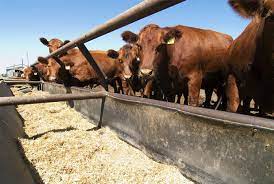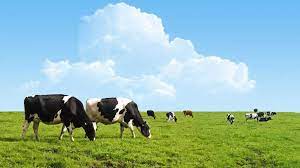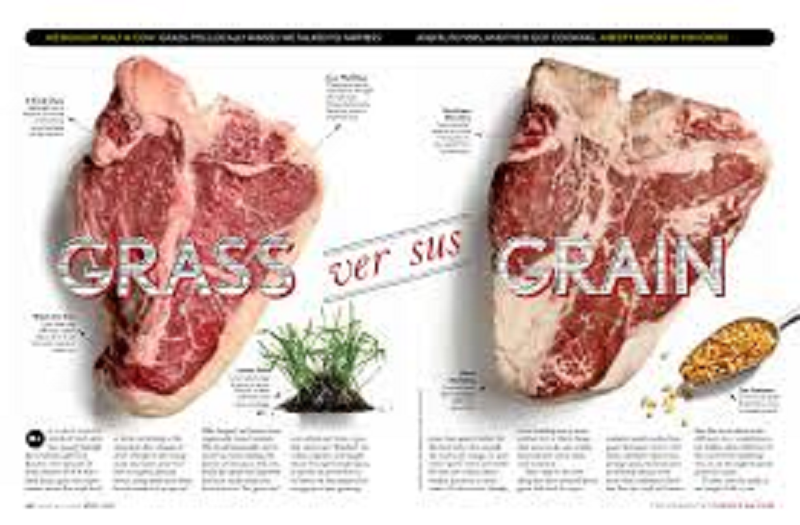Renowned for its natural and eco-conscious agricultural practices, Nutrient Dense Beef stands as the pinnacle of meat production. Cattle destined for this premium cut are raised using traditional methods, allowing them to freely graze on lush pastures and consume a diet reflective of their natural instincts. This approach appeals to environmentally conscious consumers, promoting a more ethical and sustainable approach to meat production. The result is a final product boasting a rich, intricate flavor profile.
Don’t miss out—order NOW!!!
Grass-Fed versus Grain-Fed: Exploring the Difference
Grass-fed beef comes from cattle raised on a diet primarily consisting of grass, pasture, or similar forages. On the other hand, grain-fed beef originates from cattle fed a diet predominantly composed of grains. The key difference lies in their feeding regimen: grass-fed cattle exclusively consume grass, while grain-fed cattle transition from grass grazing to a diet centered around specially formulated grain-based feed. This transition often involves the supplementation of hormones and antibiotics.
In what’s commonly termed as the conventional system, cattle are predominantly fed grains. In the US, approximately 80 percent of commercial beef follows this method. Typically, cattle are introduced to grain feeding shortly after weaning, continuing this regimen until harvest. However, they may spend a few months grazing on pasture before transitioning to a grain-centric diet for the final phase of their lives, lasting around five months. This diet prioritizes high-energy intake, a hallmark of the grain-fed system.
Here are a few more distinctions:
The limitations on animal movement contribute to higher concentrations of manure and nutrients such as potassium, phosphorus, and nitrogen—these are some drawbacks. Moreover, the profitability of a grain-fed system often relies heavily on grain markets, which experienced significant fluctuations between 2008 and 2014, impacting cattle profitability. For individuals adhering to a low-fat diet, dealing with excess fat in the carcass can pose a challenge, as cattle tend to grow and fatten more rapidly when fed grains.
Beyond the straightforward decisions of selecting cuts and portion sizes, evaluating beef options can become somewhat complex, particularly when deciding between grain-fed and grass-fed varieties. Is there a genuine disparity in flavor between grass-fed and corn-fed beef, and if there is, what accounts for the former’s higher price tag? From a nutritional standpoint, grass-fed beef reigns supreme. It boasts double the amount of omega-3 fatty acids and contains higher levels of vitamins and antioxidants compared to conventional beef. Due to its leaner profile, grass-fed beef often exhibits a more pronounced gamey flavor. In contrast, conventional beef tends to have a sweeter taste and a softer texture.
To expedite weight gain, most cattle producers start by feeding their cows grass before transitioning to corn or grain—an efficient method akin to a quick meal for the cows. Additionally, many farmers rely on antibiotics to maintain herd health due to the departure from their usual diet. Regardless of the beef choice, ensure proper preparation! The interaction between cows and grass is symbiotic: cows provide manure, which nourishes plant life, completing the circle of life. These creatures essentially wander the natural world, consuming native plants, rather than merely existing in commodity farming systems. This practice enhances the beef’s nutritional density, crucial for the future of food and its impact at the cellular level.
Is Grass-Fed Beef Better for You?
Generally speaking, grass-fed beef tends to be leaner than conventional meat. Leaner meats are typically considered better for heart health. In comparison, grain-fed beef may pose a greater risk to heart health due to its higher saturated fat content, especially when consumed in excess. Moreover, grass-fed beef contains elevated levels of essential nutrients like vitamins and conjugated linoleic acid (CLA), a beneficial fat associated with improved immunity and reduced inflammation. Additionally, grass-fed beef boasts higher antioxidant levels compared to grain-fed varieties, potentially lowering the risk of heart disease and certain types of cancer.
Meat poses a culinary quandary for environmentally aware carnivores. Its production requires significant amounts of land and water, and according to the World Resources Institute, ruminant animals such as sheep and cows contribute to half of all greenhouse gas emissions associated with agriculture.
For environmentally conscious carnivores, meat presents a culinary dilemma. Its production requires extensive land and water resources, and according to the World Resources Institute, half of all greenhouse gas emissions related to agriculture stem from ruminant animals like sheep and cows. Some argue that consuming grass-fed beef is more environmentally friendly and humane. However, addressing these issues requires a shift in focus from the cow itself to management practices. Food is a precious resource, akin to gold for a nation, especially when soil quality is at stake. It’s imperative to prioritize sustainable solutions to meet our nutritional needs without degrading the land further.
Get in touch with us today to unlock exclusive benefits! As a valued member of our online community, we’re happy to offer you special gifts. Discover how to reach out and connect with us for more details:



